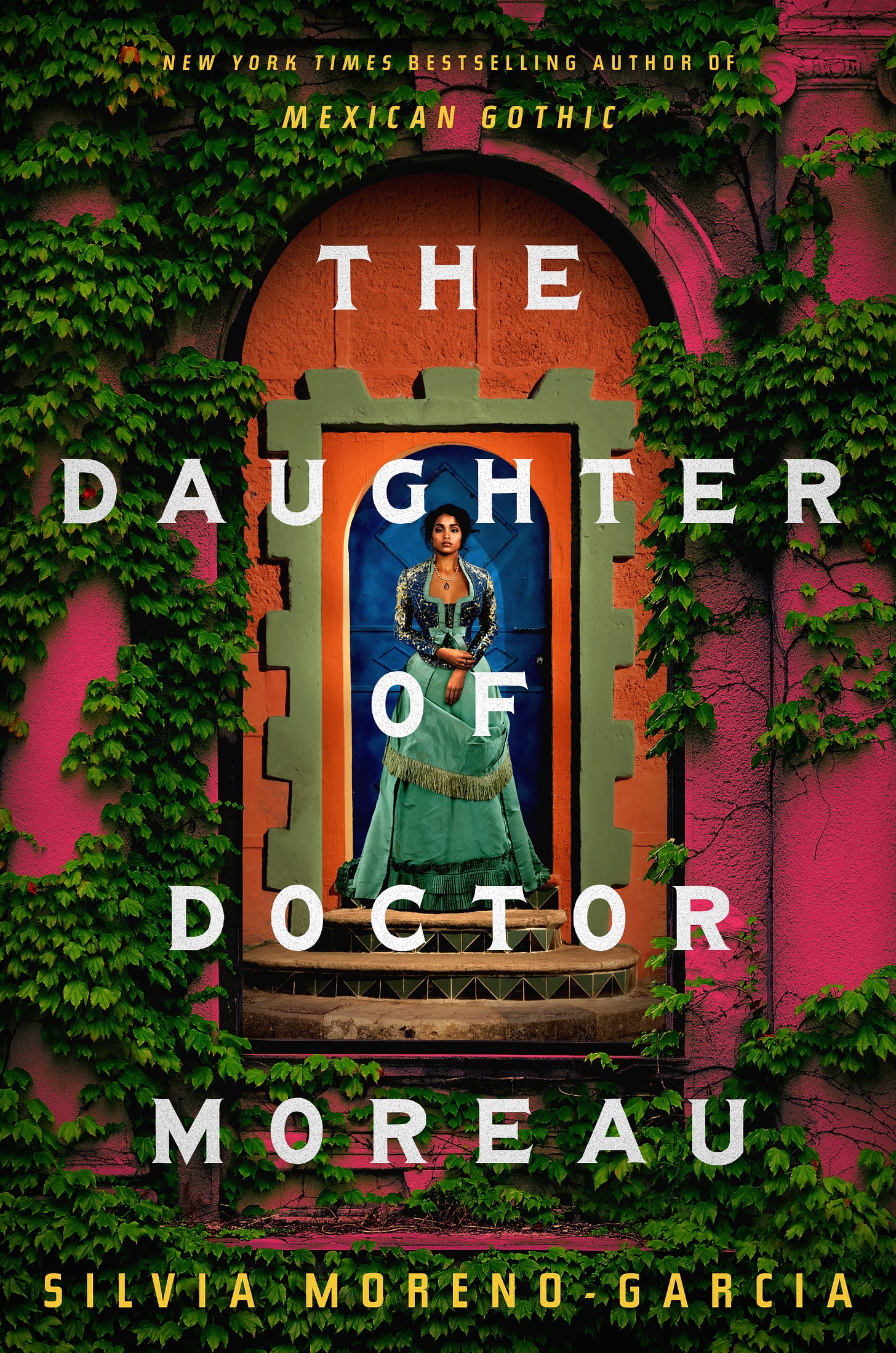Every time I try to watch The Island of Dr. Moreau (1996 version, as I am an elder millennial, an “Oregon Trail” generation child) all I want is for that movie to be good. It had promise, didn’t it? And yet, each incomprehensible scene devolves into a farce, and anyway I haven’t stayed up long enough to watch a complete movie in several years. I may put it on again tonight, because even if the end is terrible I won’t even be awake to see it.
Silvia Moreno Garcia has written a retelling of H.G. Wells’ novel, but rather than focusing on the narration of the men visiting the island, she writes from the perspective of Moreau’s daughter, Carlota. She alternates perspectives with Montgomery, the overseer of the island. For this story, the island is located off the Yucatan peninsula. Mexican history is appealingly layered into the story, providing a fresh take on what might be a familiar tale for most.
If you know almost nothing about the novel or the movies adapted from its premise, this could be full of spoilers. Stop here if you’re completely unfamiliar with any novels or movie in the Dr. Moreau uni(multi?)verse – know that I’d recommend this, and get to a library! You might take a moment to appreciate this stunning cover:

For everyone else – it was a pleasure to read a version of the Dr. Moreau story in which his creations have complexity, and agency. None more so than Carlota.
In this tale, not quite as old as time but to avoid quibbling we might say as old as a life time, Montgomery has been brought to Yaxaktun to oversee an island populated by Dr. Moreau and his creations. The owner of the land and patron of Dr. Moreau, Lizalde, is a member of the aristocracy. He tolerates Dr. Moreau’s experiments because he hopes to use these creatures for forced labor – but first, Dr. Moreau must be able to strengthen them and help them to live longer lives.
Carlota has believed since birth that she is the daughter of Moreau and a woman he did not marry, most likely a prostitute. She never knew her mother, and has only vague memories of her youth. She knows she experienced some sort of strange illness, one that Dr. Moreau tells her he can cure with his regular injections that seem like totally normal medications, never mind the jaguar he that plays some unspecified role.
Carlota loves the island, and she loves her friends, especially the more human-seeming friends that Moreau has deemed suitable as playmates for her. As children, they all tend to want to avoid the prying eyes of Lizalde and whichever caretaker he brings to the island. As they grow older, the tension between them grows, because of course Carlota has human prospects that include at least the potential to leave the island, whereas her friends face early declines in their health and just the general issues related to having human sensibilities and a furry face.
Montgomery is given an interesting backstory here – he is a moral man with a weakness for alcohol. His wife left him, and he was in the midst of drinking away his money when he was recruited for the position of caretaker of Yaxaktun. His shame at the loss of his marriage is matched by his frustration with his inability to control his drinking. And yet, when danger arrives on the island, he recognizes it immediately.
Lizalde’s son, Eduardo, and his nephew Isidro arrive to more or less inspect the goods they expect to one day inherit. They are also there to start the eviction process for Dr. Moreau. Moreau has one more trick up his sleeve – he imagines he might be able to wring a little more support out of the Lizalde’s if his daughter is part of the Lizalde family.
And from there, the tragedy is set in motion. Indeed, Carlota’s wild beauty proves to be seductive for Eduardo – but the consequences of that attraction do not bind the families as anyone may have intended. Once enough secrets have been revealed, each character has no choice but to move towards freedom, at whatever cost.
Throughout the novel, Carlota longs of a true sense of home. She is driven by that desire to find something that feels true, and ultimately that forges her path, or as much of it as the author grants for us to see.
